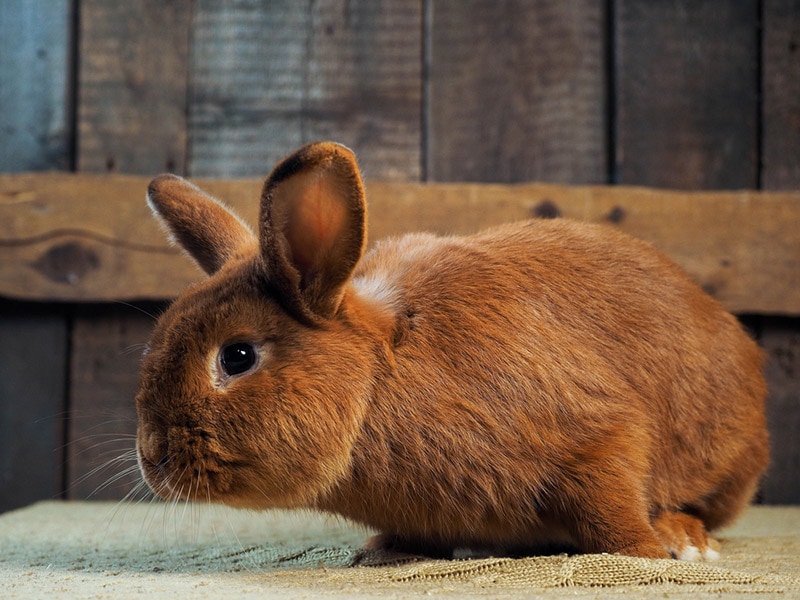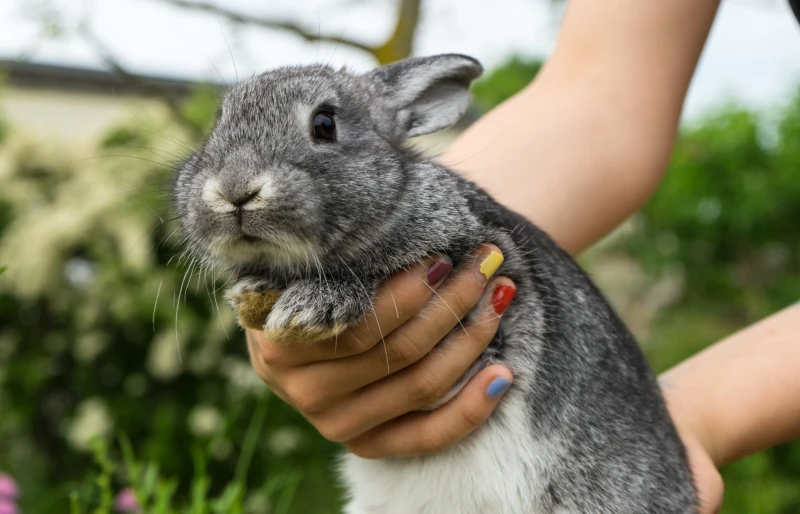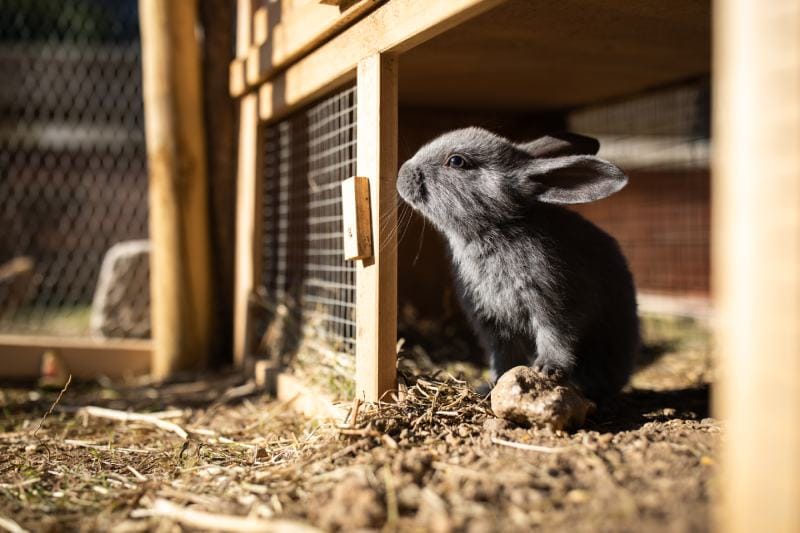Satin Rabbit: Info, Care, Diet, Pictures & More

Updated on
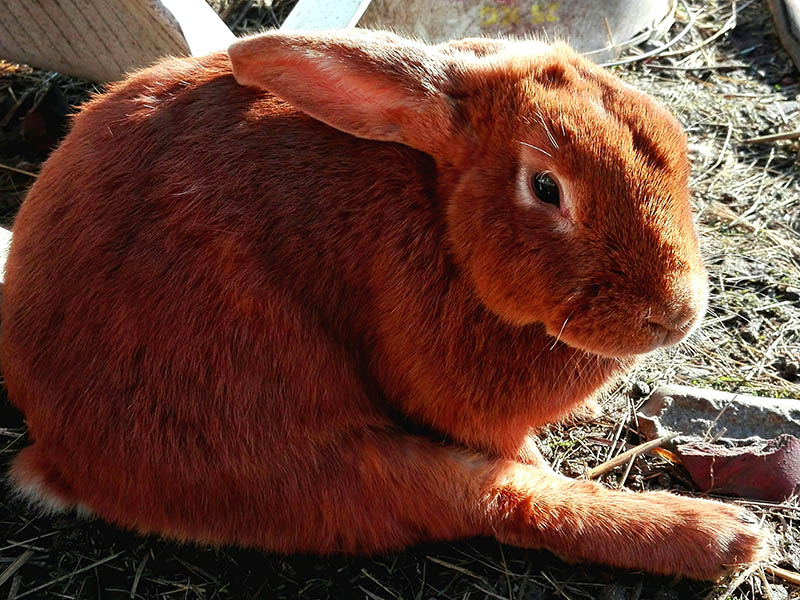
Click to Skip Ahead
Satin rabbits are a popular, versatile rabbit breed kept for meat, fur, and as a pet. They’re prized for their beautiful satin-like coats that come in many different colors. Satin rabbits are gentle and docile as pets, making them ideal for owners of all experience levels.
Learn more about the satin rabbit to decide if this is the right breed to keep as your pet.
| Size: | Medium |
| Weight: | 6 – 11 pounds |
| Lifespan: | 5 – 9 years |
| Similar Breeds: | Netherland Dwarf, Havana Rabbit, Mini Satin Rabbit |
| Suitable for: | All types of rabbit owners, beginners, homesteaders |
| Temperament: | Friendly, calm |
Satin rabbits were developed in the 1930s by Walter Huey, an Indiana breeder. The rabbits were an accident that he stumbled upon while trying to improve the coat color of Havana rabbits. With selective breeding, he managed to create rabbits with shiny, satiny coats due to a recessive gene mutation. Now, these rabbits are available in standard and miniature versions.
Satin Rabbit Characteristics
How Much Do These Rabbits Cost?
Satin rabbits are prized as show rabbits, for meat and fur, and as pets. They were developed in the US but quickly grew in popularity in other countries. Because of their appeal, these rabbits can cost up to $100. You may be able to find satin rabbits available in shelters or free to a good home, but that’s not as common.
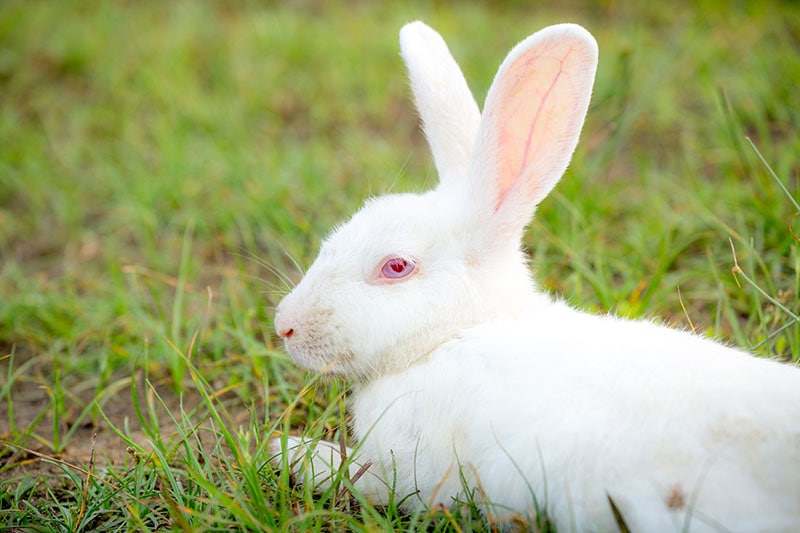
Temperament & Intelligence of the Satin Rabbit
Interested in adding a satin rabbit to your household? These rabbits have a gentle temperament, making them ideal for beginner rabbit owners. Their temperament also can help them adapt to different living environments and a variety of people.
Satin rabbits are intelligent and capable of learning a lot of different tricks, including litter box training. Because they are considered intelligent, satin rabbits still need activities to give them mental stimulation. Having a safe place for them to run around and get exercise is a must. Toys and rabbit-safe obstacles are other great ways to keep the rabbit from getting bored.
Do These Rabbits Make Good Pets? 👪
Satin rabbits are a good choice for rabbit owners of all lifestyles and experience levels. They can adapt to life indoors or outdoors easily and have a calm and friendly nature. They’re also smart, but they need to be socialized and trained using gentle methods to learn tricks.
With the right care and enrichment, satin rabbits bond strongly with their owners and hutch mates. They’re gentle enough for children, but it’s important that children are taught to interact appropriately with the rabbit. When threatened, rabbits can bite, scratch, or flee.

Does This Rabbit Get Along With Other Pets?
Like most rabbits, satin rabbits are social animals and enjoy living with other rabbits. It’s important to keep them with other rabbits of similar breed and size. Pairing a gentle satin with a larger or more assertive rabbit breed can lead to conflict. These rabbits may also get along with other small animals like guinea pigs.
Though the rabbit will probably get along with other animals, it’s important to remember that they are prey animals. Interactions with cats and dogs, no matter how gentle, can be extremely dangerous. Cats and dogs can easily injure the rabbit, even if they’re not trying to.
Things to Know When Owning a Satin Rabbit:
Food & Diet Requirements 🥕
Satin rabbits need high-quality, diverse diets that mimic their natural diets. This should include roughage like Timothy hay, succulent feeds like grass and leafy vegetables, and some pellet or grain food with supplements to ensure they get a complete and balanced diet. If you’re not sure what’s appropriate for your satin rabbit, speak with your vet.

Habitat & Hutch/Enclosure Requirements 🏠
Satin rabbits are calm, but they still have a lot of energy and need space to run and play. Whether you keep your rabbit indoors or outdoors, they should have a hutch that’s at least four times larger than their adult size—enough for three hops from end to end. This is typically a minimum of six feet long by two feet high by two feet deep. If you plan to keep additional rabbits, you will need a larger hutch.
Exercise & Sleeping Needs 🐇
Satin rabbits need at least four hours of exercise a day. While some of it will happen in the hutch, you should spend a few hours with your rabbit out of its hutch in a rabbit-proof room. You can create a rabbit run or a closed obstacle course to encourage your rabbit to get more exercise. Some features to have include jumping platforms, hides, tunnels, shelter, and different floor textures. Your rabbit will need constant supervision when exercising or exploring, however.

Training 🥎
With gentle training methods, you can train your rabbit to perform some tricks, such as coming to you when called and sitting. Some rabbits can be taught agility work as well, though it’s important to check with your vet that your rabbit is healthy enough for vigorous activity.
Grooming ✂️
Satin rabbits will groom themselves, but their soft and luxurious coats should be brushed regularly to remove dirt, loose hair, and tangles. Your rabbit shouldn’t require a bath, but you can clean them with a soft, wet cloth and plain water. Rabbits also need their eyes, nose, ears, and mouth wiped and their nails trimmed regularly. You can help this along by providing rough surfaces in your rabbit run that wear the nails naturally.
Lifespan and Health Conditions 🏥
Satin rabbits live five to nine years with proper care. They are prone to some conditions that affect all rabbits such as flystrike, a condition in which flies lay eggs on the fur, leading to maggots incubating under the skin and burrowing their way out. They can also experience infections like rabbit calicivirus, coccidiosis, myxomatosis, and overgrown teeth.
- Abscesses
- Dental disease
- Parasites
- Flystrike
- Rabbit calicivirus disease
- Coccidiosis
- Myxomatosis
Male vs Female
Male rabbits tend to be a little larger and heavier, but they’re similar otherwise. Otherwise, the female satin rabbit can be moody during the breeding season and irritable and territorial over their litters. If you spay or neuter your rabbit, you can reduce these behaviors and protect your rabbit’s reproductive health.
3 Little-Known Facts About Satin Rabbits
1. Satin Rabbits Are Famous for Their Fur.
Satin Rabbits are prized for meat and fur. They’re often used in rabbit shows or kept for pelts, which are in high demand because of the translucent fur that has a shimmery look.
2. Satin Rabbits Come in Many Colors.
Satin rabbits come in different color varieties: black, blue, Californian, chinchilla, chocolate, copper, otter, red, Siamese, white, and “broken”, which is any color mixed with white. Mini satin rabbits, which are a different breed, come in more colors, including all the standard satin rabbit colors and chocolate agouti, Himalayan, opal, silver marten, squirrel, and tortoise.
3. Satin Rabbits Were Bred from Havana Rabbits.
Satin rabbits originated from Havana rabbits when Huey stumbled upon the gene mutation. Because these rabbits have a different color gene, they’re recognized as a different breed and named Havana satin rabbits by the National Havana Club. They’re now known as a separate breed entirely.

Final Thoughts
Satin rabbits have a lot of desirable traits, including their stunning look, docile temperament, and easygoing nature. Though they’re fairly low maintenance, satin rabbits require space, exercise, a proper diet, and grooming to stay healthy. Whether it’s your first time keeping a rabbit or you’re an experienced keeper, the satin rabbit has a lot to offer.
Featured Image Credit: Dch Kang, Shutterstock


